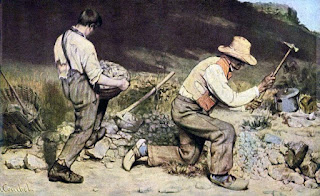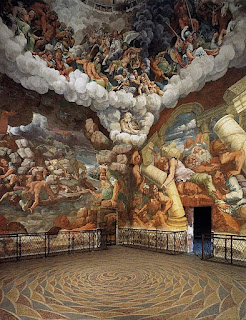Classical Art
Overview
Classical art has been around for many many centuries but it really took off in Western civilization as an artistic style expression to different historical landmarks happening like the Reformation, the French Revolution, scientific discoveries happening, and even economic power with different classes being shown through art. I decided I wanted to focus more on art that was created in the 1700’s due to the French Revolution because many beautiful pieces were created from this tragic period.
The Death of Marat
The Death of Marat was created by Jacques Louis David in 1793 and it currently resides in the Royal Museum of Fine Arts of Belgium. David created this painting as a tribute to his passed friend Jean-Paul Marat who was assassinated by Charlotte Corday who was given entrance of his home in order to tell him dirt on enemies of the revolution. But instead we can make a promising guess that she betrayed Marat and stabbed him in the chest. In his dying hand shows evidence of Corday going back on their agreement. After this painting was published Marat was made a hero and it became a recognizable image of the French Revolution.
Art Elements
The different characteristics in this painting I found to be very interesting. David started out with a bland moody background that is supposed to highlight the bathtub and the light shining through on to his body that looks almost untouched with just a little bit of blood going down his chest. His head tilted back and his arm hanging down to the right with a slight smile on his face makes him look peaceful as he’s passing. Many people believe that by having Marat’s right hand dangling resembles Jesus' arm in the painting The Entombment of Christ. Overall Marat in real life wasn’t necessarily a good man that was driven to kill for his people, but through David's painting it created a false sense of reality that Marat was a strong good leader that must be honored and respected and that his passing was a tragedy. So would I own this painting? Probably not since it’s not necessarily my style but it definitely does have an interesting backstory and I think it should continue to reside in Belgium where it is a historically significant painting.
Une exécution capitale, la place de la Révolution
Une exécution capitale, la place de la Révolution
Une exécution capitale, la place de la Révolution is a painting created by Pierre-Antoine Demachy in 1793 in the Carnavalet Museum in Paris. I decided to choose this painting because the guillotine was introduced in 1789 which was a landmark discovery in execution during the French Revolution, I believe that’s the reason why Demachy decided to paint this scenery is because of the revolution of the guillotine.
Art Elements
Demachy did an exquisite job on portraying a traumatic/depressing scene. The dark clouds rolling in around the square with a little bit of light shine through onto the guillotine created a moody scene. Plus all the people standing around watching with their hands in the air presumedly shouting or cheering for this man to be executed, is disturbing for the viewer. Another thing Demachy included was Marianne’s statue that represents strength to the public. All in all personally I find this painting to be disturbing, execution with the guillotine has always been something that freaked me out and I think that Demachy did a great job portraying that fear for me. So therefore, I would not put this painting in my home due to the discomfort this painting gives me. I suggest that this painting stays where it’s created because of its historical significance.
The Storming of Bastille
The Storming of Bastille was created by Jean-Baptiste Lallemand in 1790 and it currently resides in the Museum Carnavalet in France. The Storming of the Bastille was the breaking point to the French Revolution that happened on July 14 in 1789. What happened was the revolutionary insurgency stormed the medieval political prison in order to free 7 prisoners. Even though there were only seven prisoners, it really struck France.
Art Elements
Lallemand is a skilled artist when it comes to shading in the right areas in order to create your scene. In this painting light is being shined on to the prison which was the goal for the people that lived in Paris to overthrow. The darker colors are highlighted on the battle itself down below the prison. Something that I noticed was that most of these paintings where a battle is happening or something tragic is about to go down the sky have dark clouds rolling in. But in this particular painting there’s a little bit of dark clouds on the top but in the background there are lighter clouds rolling in, I would assume that means hope and a new light of liberty shining through for the people of Paris. For me I wouldn’t necessarily own this painting because it’s not my style but compared to the other two paintings I would gravitate more towards this one because it shows a new light of hope that I find to be encouraging. But I do think that this painting should stay somewhere in Paris because of the historical landmark that this painting shows.
URL
Artincontext. (2022, June 29). Famous French Revolution paintings - the art of the French Revolution. artincontext.org. Retrieved March 19, 2023, from https://artincontext.org/famous-french-revolution-paintings/
Death of Marat (1793). Death of Marat, Jacques-Louis David: Analysis. (n.d.). Retrieved March 19, 2023, from http://www.visual-arts-cork.com/famous-paintings/death-of-marat.htm
Meleca, A. (n.d.). Amy Meleca, M.A. Artlex. Retrieved March 19, 2023, from https://www.artlex.com/art-movements/classical-art/
White, K. (2020, July 15). 'the death of Marat' defined the French Revolution. here are 3 things you might not know about Jacques Louis David's masterpiece. Artnet News. Retrieved March 19, 2023, from https://news.artnet.com/art-world/jacques-louis-david-death-of-marat-3-facts-1894240






This comment has been removed by the author.
ReplyDeleteAlthough you found the depiction/imagery of the guillotine in the painting, Une exécution capitale, la place de la Révolution by Pierre-Antoine Demachy, as disturbing, one could argue that many of the paintings that were done during the 1700s that centered around revolutions often showed graphic images of soldiers in combat that were centered around patriotism, pride, and courage. The Death of Marat painting gives similar vibes in the sense that a person dying is something that can be too much for the public to consume. I like Demachy's painting more so that the painting made by David, since I feel that David's painting is a bit too revealing, and distracts from the goal of the artist behind the painting.
ReplyDeleteHello Laney,
ReplyDeleteI love the era of art from the French Revolution because of all the history that is being represented. While the Death of Marat is a tragic story, I do love the appeal of the painting that just seeps with sadness and lost desperation. The way that he is clutching the quill while he was obviously killed while writing just adds to the sorrow of what could have been. All three of these paintings add to the theme of the classical era of art during the French Revolution and show different aspects that one may not see within just one painting from this time. The fighting and struggle is apparent in each of the paintings. After some research on Pierre-Antoine Demachy, I did find it interesting how he typically painted ruins. Instead, in the painting Une exécution capitale, la place de la Révolution he chose to capture the graphic scene of the creation of the guillotine which is a big change from the typical pieces he created.
“Collections Online: British Museum.” Collections Online | British Museum, https://www.britishmuseum.org/collection/term/BIOG24963.
Great explanation of each of the artworks you have chosen for this era. I thought you did a great job explaining the back history of these art pieces and I did learn about both of these art pieces. I had no knowledge of what these art pieces were or the history behind them all. I think the death of Marat was my favorite out of the other two arts. Yes, it's a horrible and sad story but I could see the art with full emotions and the elements of the artwork and the history behind it all. Great blog post.
ReplyDelete